
What happens when an Iron Chef contestant opens his own ramen restaurant? He creates a new kind of cuisine: ramen kaiseki.
Ramen is the sort of thing you scarf down quickly in a casual setting and for a low price. So imagine how surprised we were when we heard about a ramen restaurant that’s the complete opposite of everything we just described.
Called Genei Wagan, the restaurant is located in downtown Tokyo, about midway between Ebisu and Hiroo Stations. Looking at its address on the map, we’d previously walked right past it without even realizing there was a ramen joint there, but really, can you blame us?
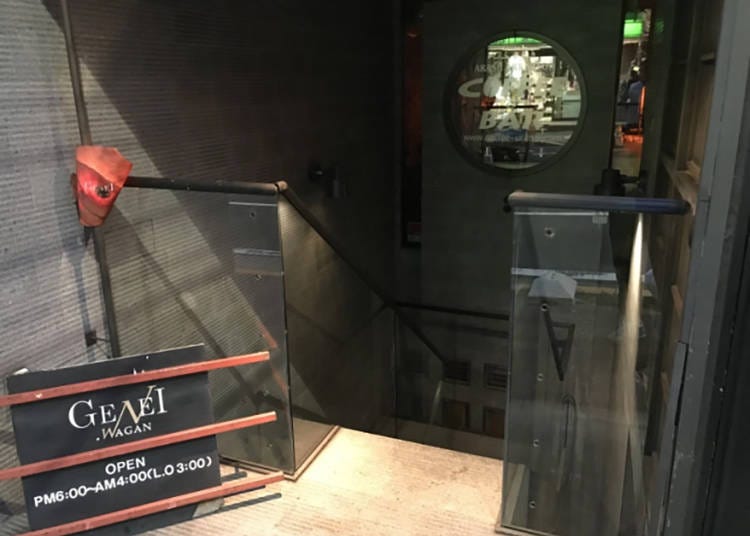
Usually, ramen places are pretty easy to spot, what with their out-in-front menus listing different types of ramen, their posters showing pictures of ramen, or their signs that include the word “ramen.” Genei Wagan doesn’t provide you with any of those clues. Instead, all you get is an understated sign at knee height, which doesn’t even say anything about it being a restaurant, that’s placed in front of a stairwell that gets progressively darker the farther down it you go.
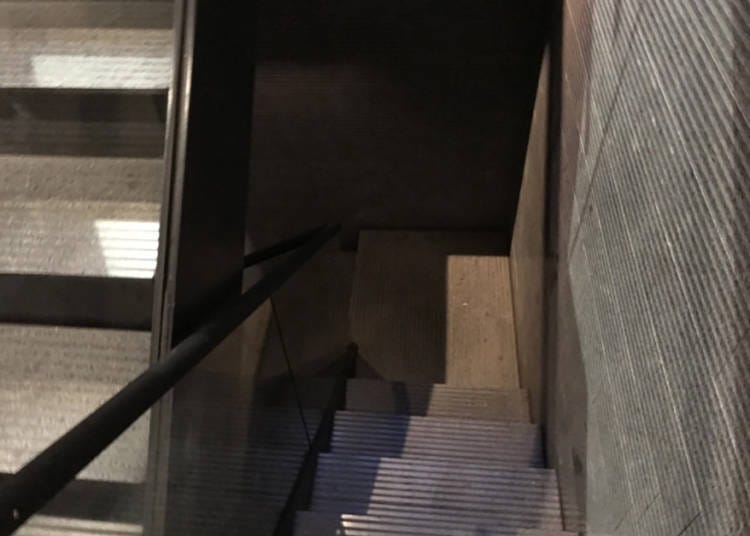
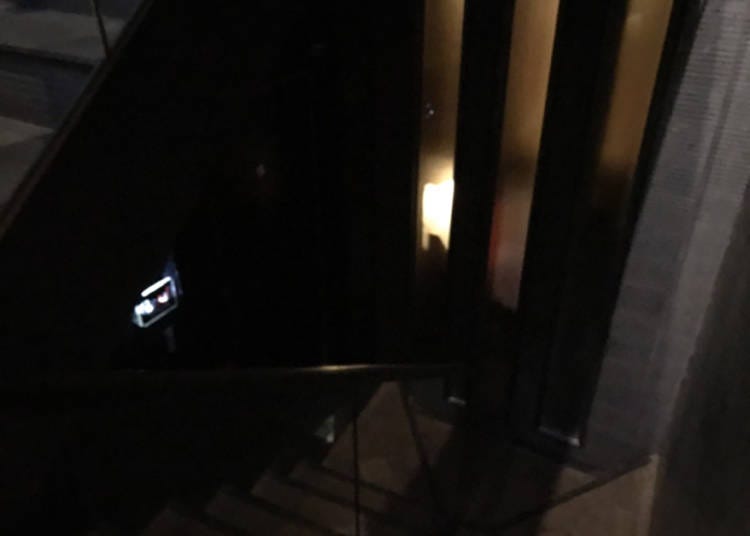
At the bottom is a heavy black door, but when we tried pulling it open, it didn’t so much as budge.
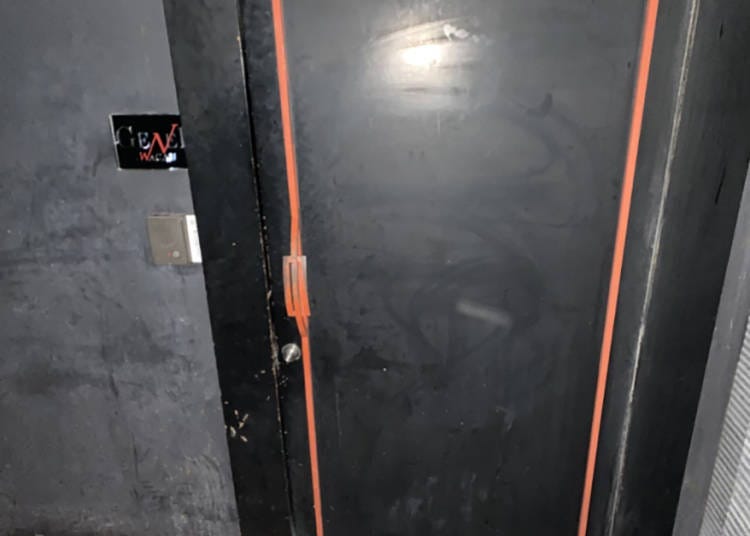
So we tried pushing it, and once again, there wasn’t even a wiggle. And yes, we did think to try sliding it to the side, but even that didn’t work.
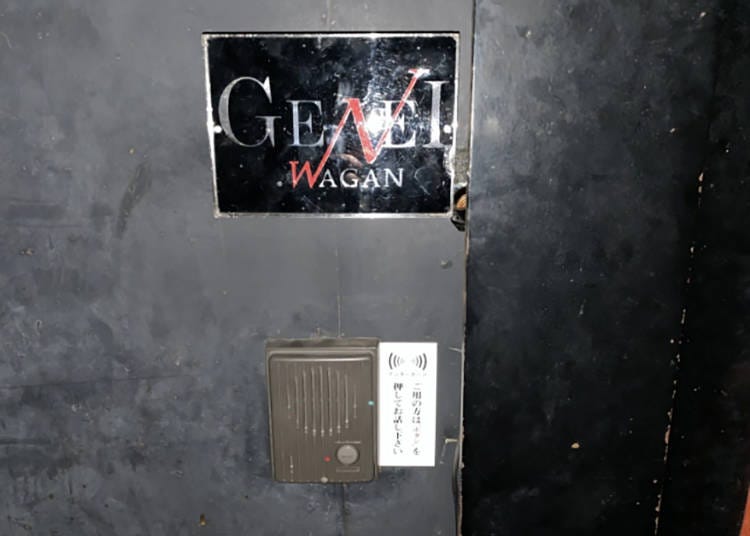
Then we finally noticed the intercom next to the door. Hesitantly, we pushed the button, and a voice greeted us with “Hello?”
“Um…we’d like some ramen…,” we said, to which the voice replied “Oh, do you have a reservation?” We replied that we didn’t (because who makes reservations for ramen?), after which the voice told us, politely but firmly, “I’m sorry, but we only take customers by reservation.”
So we sulked home hungry, but also went on Genei Wagan’s website and made a reservation for a different night. This time, we were let through the door and into the restaurant’s interior, which looks more like a fancy bar or club lounge than a noodle house.
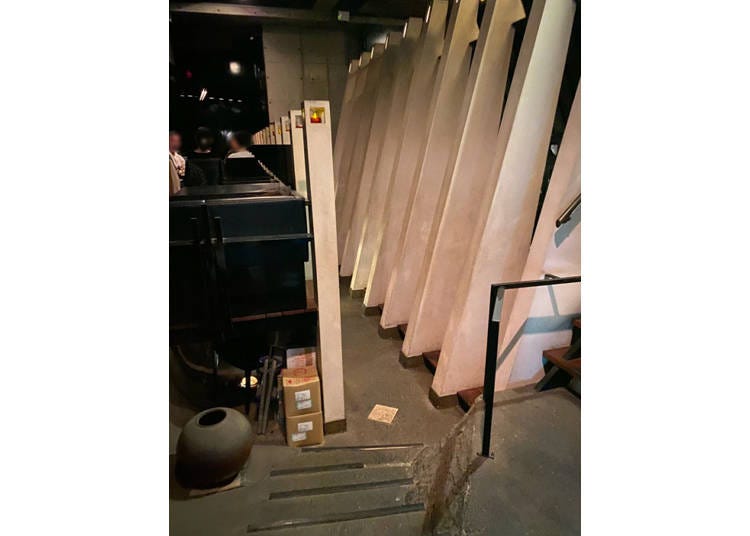
Genei Wagan’s owner/chef Hideki Irie believes that dining out should be an event, and he wants customers to begin feeling like they’re heading someplace special from their first steps down that mysterious staircase.
▼ Irie was previously a contestant on Japan’s legendary Iron Chef competitive cooking TV show, and yes, his sense of style is so developed that he wears two watches at once.

But it’s not just the admission system that sets Irie’s eatery apart from other ramen restaurants, but its prices too. If you want a bowl of Genei Wagan ramen, be prepared to shell out 8,400 yen (US$78), after tax and service charge, for it.
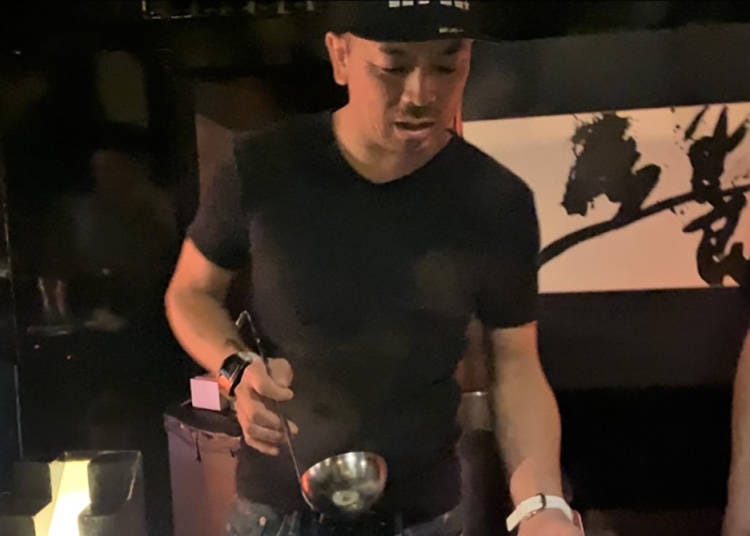
That’s definitely going to give a lot of ramen fans sticker shock, but the upside is that you don’t get only a bowl of ramen. In addition to being reservation-only, Genei Wagan doesn’t do a la carte orders. Instead, it serves a 10-course meal that it’s dubbed ramen kaiseki, aligning itself with Japan’s opulent kaiseki banquet dining culture.
▼ The list of courses looks like a sheet of brush-stroke poetry.
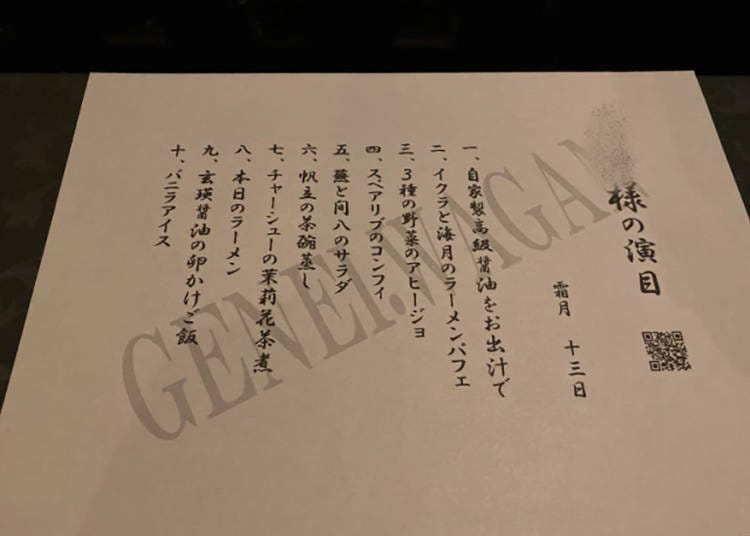
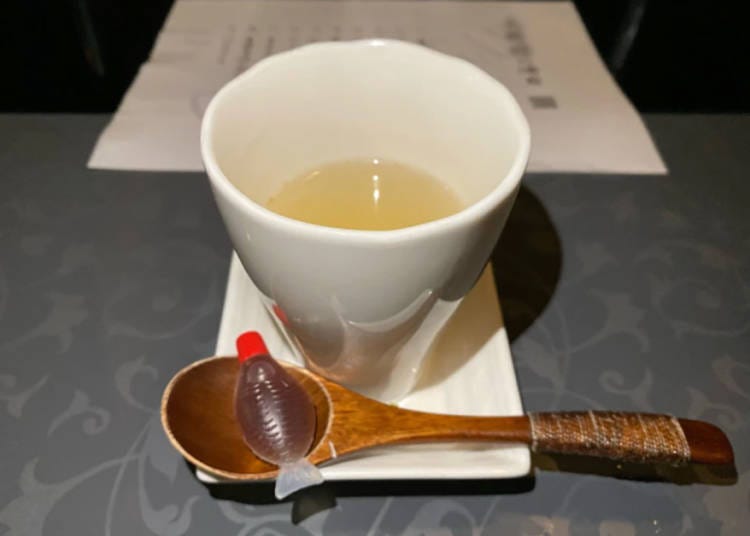
The first course is a cup of dashi (fish stock) paired with a small measure of Irie’s custom soy sauce, which he makes himself. The dashi is a complex mix of katsuo and flying fish stock, dried shiitake mushroom, and rishiri kombu kelp, with no direct seasonings added.
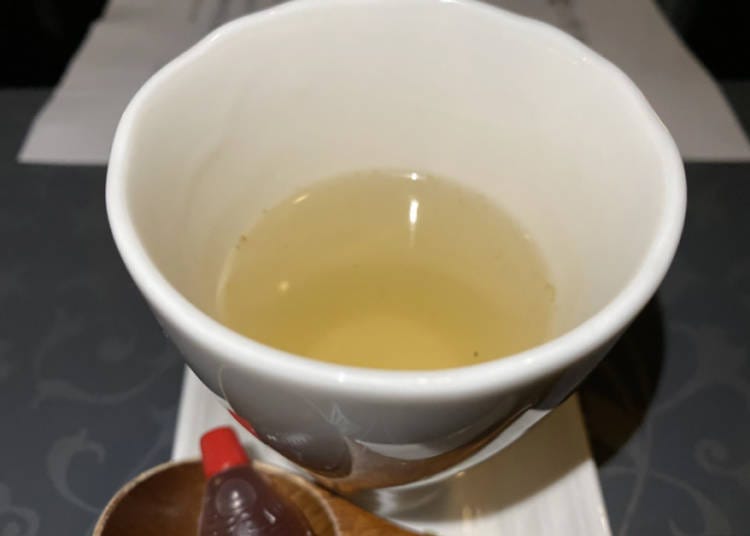
Initially mild in flavor, but gently building to an enticing seafood flavor, the dashi is incredibly satisfying on its own. However, adding a few drops of soy sauce raises it to an even higher echelon of deliciousness, since Irie’s soy sauce is fortified with extracts from abalone, shrimp, scallops, bonito, mackerel, and kombu.
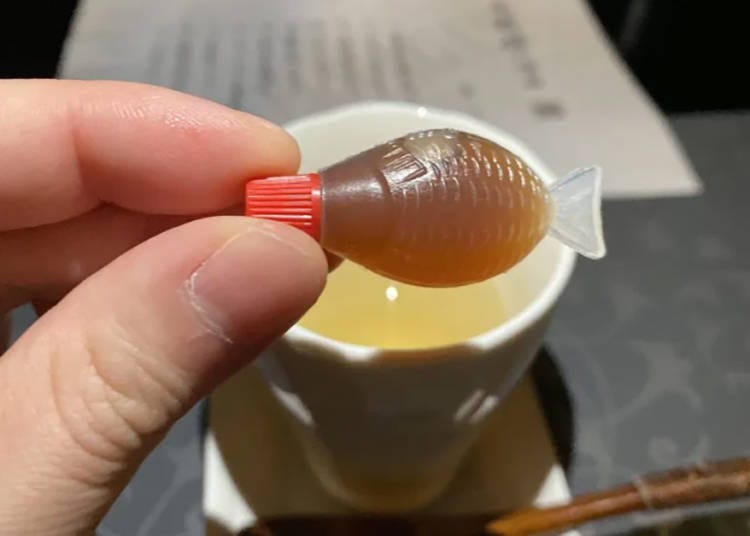
The second course is where we got our first taste of ramen, in the form of the Ramen Parfait.
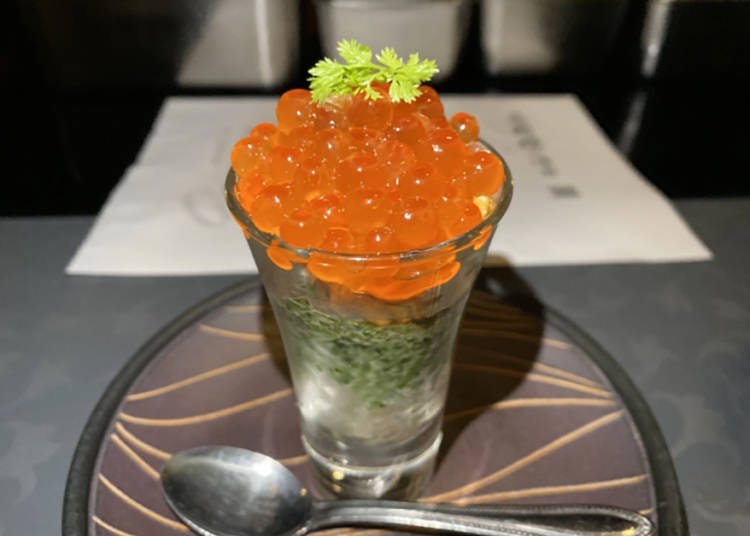
There’s no ice cream or sugary flavors here, however. Instead, this “parfait” has a base of sliced jellyfish with XO sauce, with layers of nori seaweed cream and fried ramen noodles above, and a pile of ikura (salmon roe) on top.
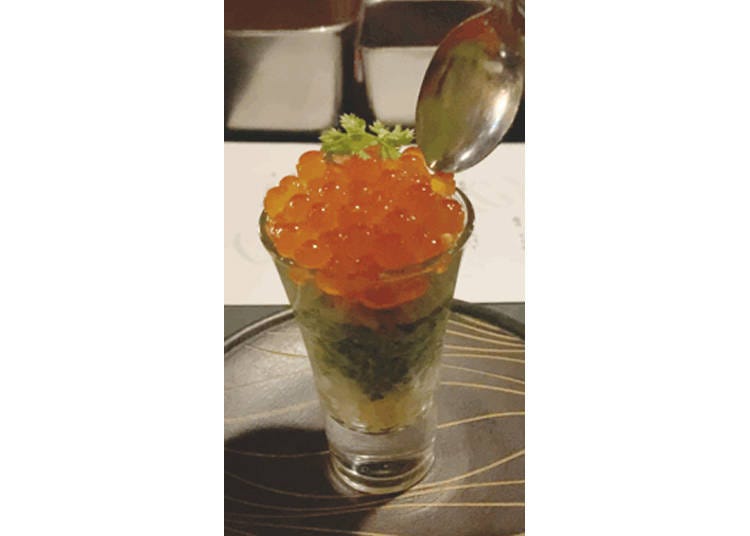
As we mentioned above, there are 10 courses in Genei Wagan’s ramen kaiseki, but we’re going to jump ahead to course eight, since that’s when you’re served the ramen of the day.

On our visit, Irie prepared his Shiokaoru Shoyu (“scent of the sea with soy broth”) ramen, which in addition to the customary slice of chashu pork features mizuna mustard greens, sliced white negi onions, wispy ito togarashi peppers, and flakes of grilled onion.
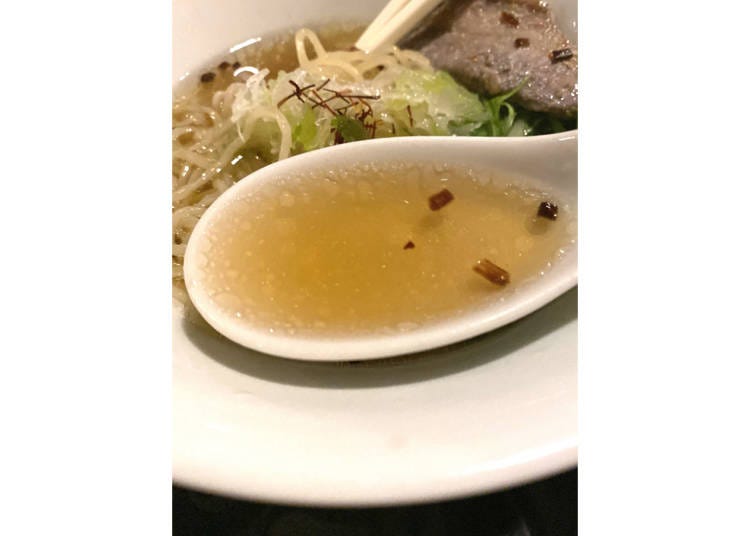
The broth is clear, not cloudy, and has an enticing scent promising a world of marine wonders for your taste buds. That’s because it’s made with the same dashi as in the meal’s first course, and a single sip didn’t just please our brain’s flavor receptors, but filled our entire being with joy.
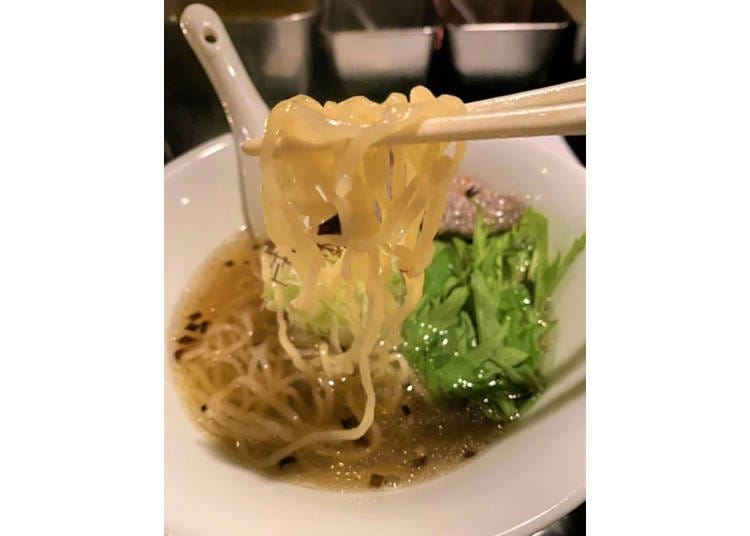
The noodles are beautiful. That might sound like a strange thing to say, but they truly glisten in the light, thanks to the special way in which Irie makes them with more water than other restaurants use for their ramen. The result is a unique kind of noodle he calls “takasuimen” (meaning “noodles with additional water”), which have a smooth texture while still retaining just the right amount of firm texture at their core.

In contrast to Irie’s skillful utilization of dashi and soy sauce, the chashu is actually marinated in wine. This makes it extra-juicy and rich, but the quality of the meat and the way it’s cut prevent the strip of pork from degrading into a soggy texture as it soaks in the broth.
Once we’d polished off our noodles and toppings, we were more than ready to drink every last drop of broth. Before we could, though, Irie politely told us not to, and that we should instead save, in his words, “about three sips’ worth.” While it took all of our willpower to comply with his directions, in the end we were happy we did.
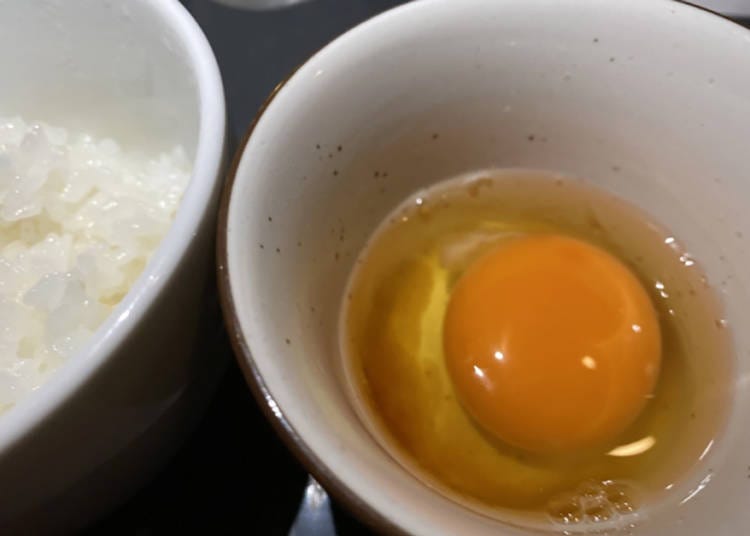
The ninth course is tamagokakegohan, raw egg poured over white rice (with the heat of the grains flash cooking the egg as it comes into contact with them).

It’s common to add a dash of soy sauce to tamagokakegohan, but Irie instead recommends pouring the ramen broth over it…

…and he’s a genius for doing so. Not only is the combination delicious, its similarity to the first course brings the meal full-circle right before dessert, the last course, is served.
▼ For our meal, dessert was vanilla ice cream with salt and olive oil.

Our complete meal consisted of:
1. Dashi with soy sauce
2. Ramen parfait
3. Ajillo with three kinds of vegetables
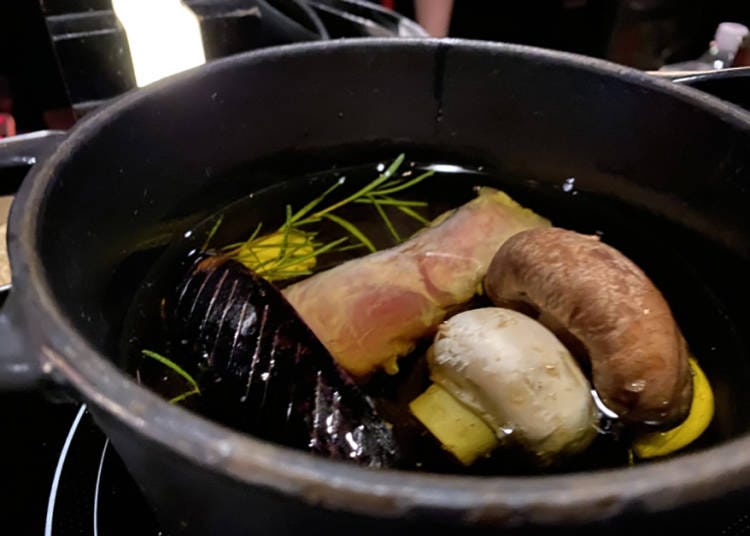
4. Sparerib confit
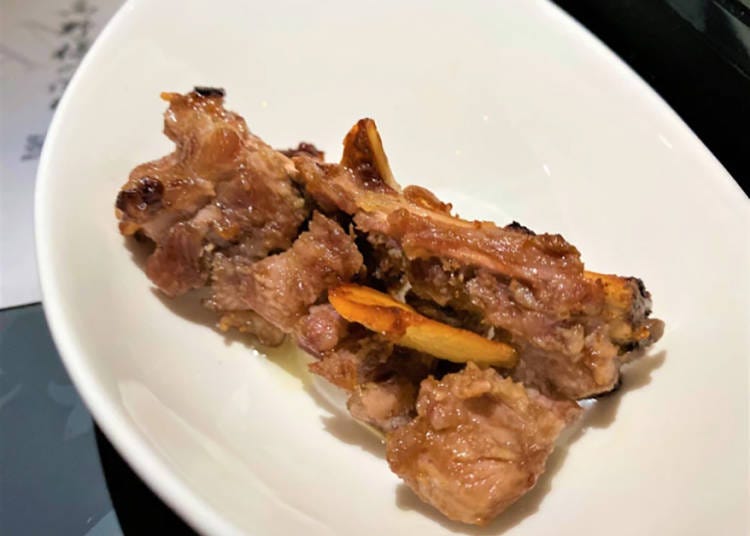
5. Turnip and seared amberjack salad
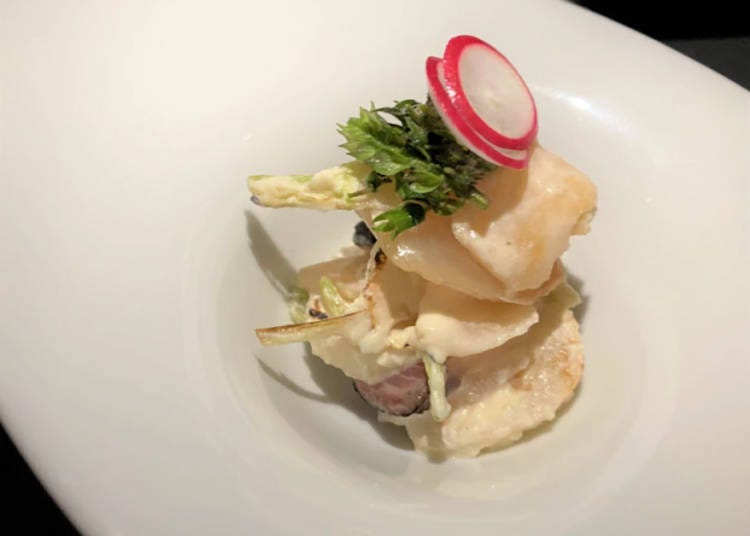
6. Steamed scallop with basil butter sauce
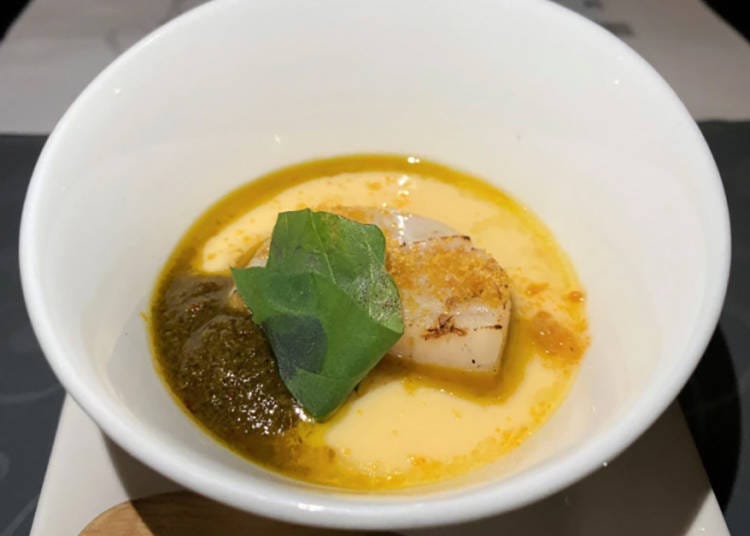
7. Jasmine tea-stewed chashu pork

8. Ramen of the day
9. Genei tamagokakaegohan
10. Vanilla ice cream

If you think it can’t have been easy for Irie to develop so many dishes, you’re exactly right. In preparation for opening his own ramen restaurant, he did extensive research with companies that produce flour and soy sauce to learn how to make noodles and soy sauce just to his liking. When buying a complete noodle-making machine proved too costly for his initial budget (the model he was considering cost around eight million yen (US$74,000), he instead purchased parts from used machines and assembled his own custom unit, getting exactly what he wanted for a fraction of the price.
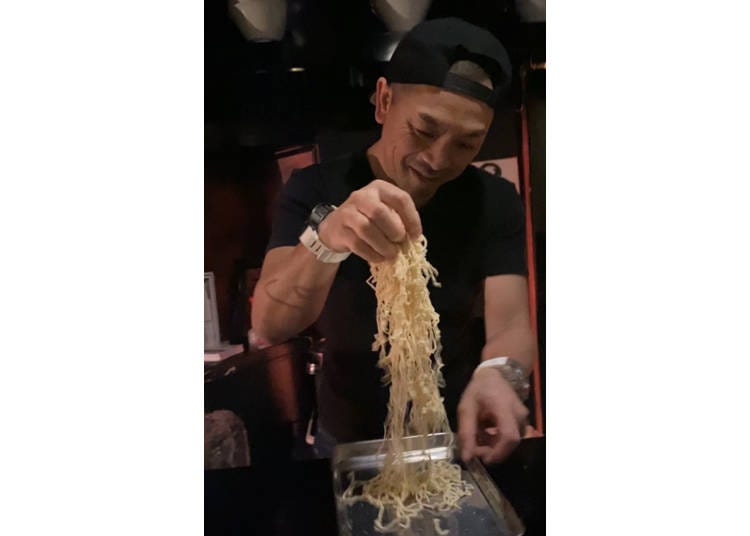
But what’s most amazing of all is that in the course of one year, he ate out at ramen restaurants an astounding 730 times, to see what other chefs were doing and understand what worked and what didn’t. Out of those 730 ramen meals, Irie figures about 210 were repeat visits, and when he asked himself why he’d gone back to those restaurants for a second time, it was because they were fun and surprising. With its unique atmosphere and innovative recipes, those are definitely adjectives appropriate to Genei Wagan, and hope to go back again someday, though we’ll have to remember to make a reservation before our cravings get unbearably intense.
Restaurant information
Genei Wagan / ゲンエイワガン
Address: Tokyo-to, Shibuya-ku, Hiroo, 1-10-10
東京都渋谷区広尾1丁目10−10
Open 6 p.m.-midnight
Reservation website
Photos ©SoraNews24
Related Articles
- Area
- Category
*Prices and options mentioned are subject to change.
*Unless stated otherwise, all prices include tax.
Popular Tours & Activitiess
Recommended places for you
-

New Seibu L00 Series Launching in 2026! What to See Along the Tokyo-Area Golden Route
by: Guest Contributor
-
Ad

Preserving the Beauty of World Heritage Site Shirakawa-go for the Future Through Responsible Travel
-

Keisei × Keikyu 16-Temple Goshuin Tour: Discover Deeper Tokyo & Yokohama
by: Guest Contributor
-

A Travel Game Changer! Go Hands-Free Between Tokyo and Kyoto with LUGGAGE EXPRESS by JTB and JR Tokai
by: Guest Contributor
-

[Extended Offer!](12% OFF KKday Coupon) Mt. Fuji Autumn Leaves, Powder Snow & More! 15 Best Tours to Experience Japan in Fall & Winter
-

Tokyo City Pass Upgrade: Harry Potter Studio Tour & Top Sights up to 85% Off
by: Guest Contributor
Inspiration for Accommodations
-

Enjoy Mt. Fuji from the Comfort of Your Room! Recommended Ryokan with Mt. Fuji View
-

Stay Near the Cherry Blossoms! Hotels for Cherry Blossom Viewing in Tokyo
-

Family-Friendly Hotels with Free Shuttle to Disneyland: Convenient Access for a Magical Stay
-

Top Ranked Hakone Hotels with Mt. Fuji View: Enjoy Stunning Scenery from Your Private Space
-

Convenient Tokyo Hotels with Airport Shuttle: Ideal for Families and Heavy Luggage
-

Stunning Tokyo Tower View Hotels: Enjoy Spectacular Scenery from Your Private Space
-

Convenient Asakusa Hotels with Kitchens: Ideal for Extended Family Visits
-

Experience Luxury: Hakone's 10 Best Five-Star Accommodations
-

Enjoy Mt. Fuji Autumn Leaves! Top Hotels Near the Popular Autumn Leaves Corridor
-

Experience Hakone Fall Foliage from Your Room with Stunning Views
-

Tokyo $10 Food Challenge: 4 Tasty Asakusa Specialties You’ll Want to Try Now
by: Miyu Shimada
-

Playing With Fire: Tasting Tokyo's Super-Spicy 'Arctic Ramen' at Ramen Shop Moko Tanmen Nakamoto
-

Tokyo Tsukiji|Tsukiji Area Map & Sightseeing Information
-

Expert-Recommended! 3 'Gotochi Ramen' Regional Noodle Shops Around Tokyo
by: Miyu Shimada
-

Top Tokyo Ramen! 3 of Ikebukuro's Best Ramen Spots
-

(Video) Walking Tour along Narita Omotesando - Quaint Historical Village near Narita Airport!
by: Victor Gonzalez
- #best ramen tokyo
- #what to buy in ameyoko
- #what to bring to japan
- #new years in tokyo
- #best izakaya shinjuku
- #things to do tokyo
- #japanese nail trends
- #what to do in odaiba
- #onsen tattoo friendly tokyo
- #daiso
- #best sushi ginza
- #japanese convenience store snacks
- #best yakiniku shibuya
- #japanese fashion culture
- #best japanese soft drinks



















